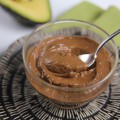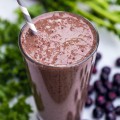Thank you to former Otionite Paige for sending this to me. This is why it is so important to use proper preservation in all of your products. Germall Plus is best in powdered, dry products. Germaben II is good in lotions and Phenonip is ideal for oil based products. You can find the link to the article, copied below, here.
“Healthy consumers can handle the low levels of bacteria occasionally found in cosmetics. But for severely ill patients these bacteria may trigger life-threatening infections, as patients in the intensive care unit at one Barcelona hospital discovered after using contaminated body moisturiser. The Burkholderia cepacia bacteria outbreak is detailed in the open access journal, Critical Care.
Five patients suffered from infection including bacteremia, lower respiratory tract infection and urinary tract infection associated with the bacterial outbreak in August 2006. Skin care products sold in the European Union are not required to be sterile, but there are limits to the amount and type of bacteria that are permitted.
The Hospital Universitari del Mar, Universitat Autònoma de Barcelona’s routine infection control surveillance pinpointed the unwelcome bacteria in five patients’ biological samples. Researchers tested a number of environmental samples, and discovered that moisturizing body milk used in the patients’ care was a B. cepacia reservoir. Pulsed-field gel electrophoresis experiments confirmed that all of the strains of B. cepacia bacteria found in patient and environmental samples were from the same bacterial clone. Tests on sealed containers of the moisturizer confirmed that the bacteria had not invaded the product after it had been opened, but that it was contaminated during manufacturing, transportation or storage.
“This outbreak of nosocomial infection caused by B. cepacia in five severely ill patients supports a strong recommendation against the use cosmetic products for which there is no guarantee of sterilization during the manufacturing process,” says study author Francisco Álvarez-Lerma.
B. cepacia is a group or “complex” of bacteria that can be found in soil and water. They have a high resistance to numerous antimicrobials and antiseptics and are characterised by the capacity to survive in a large variety of hospital microenvironments These bugs pose little medical risk to healthy people. However, those with weakened immune systems or chronic lung diseases, particularly cystic fibrosis, may be more susceptible to B. cepacia infection. B cepacia is a known cause of hospital infections.”





Thanks for the question!
This article is in reference to a lotion specifically.
Mold and bacteria needs a moist environment with water present to grow. So recipes with just butters and oils are usually safe as is. And the pH level in most liquid and bar soap makes mold growth difficult. But you can always add a preservative to be extra safe. However, with oil based scrubs used in the shower we always recommend using a preservative since it is very likely water will get in it.
Hi:
Good article! To clarify, does this refer mainly to products that require or contain water?
What about balms and butters, for example, that are completely oil based. While any fragrance or liquid colorant that goes into the balm or butter would be properly preserved, does the final product need to be preserved, as well?
For instance, the great recipe that you’ve provided for the lip stick does not contain a preservative other than Vitamin E, which does not cover the broad spectrum of bacteria as a paraben-based preservative would.
Or is this author suggesting that ALL products, including butters, balms, salts, sugars, soaps, etc., be preserved in such a manner?
Thanks for the clarification!